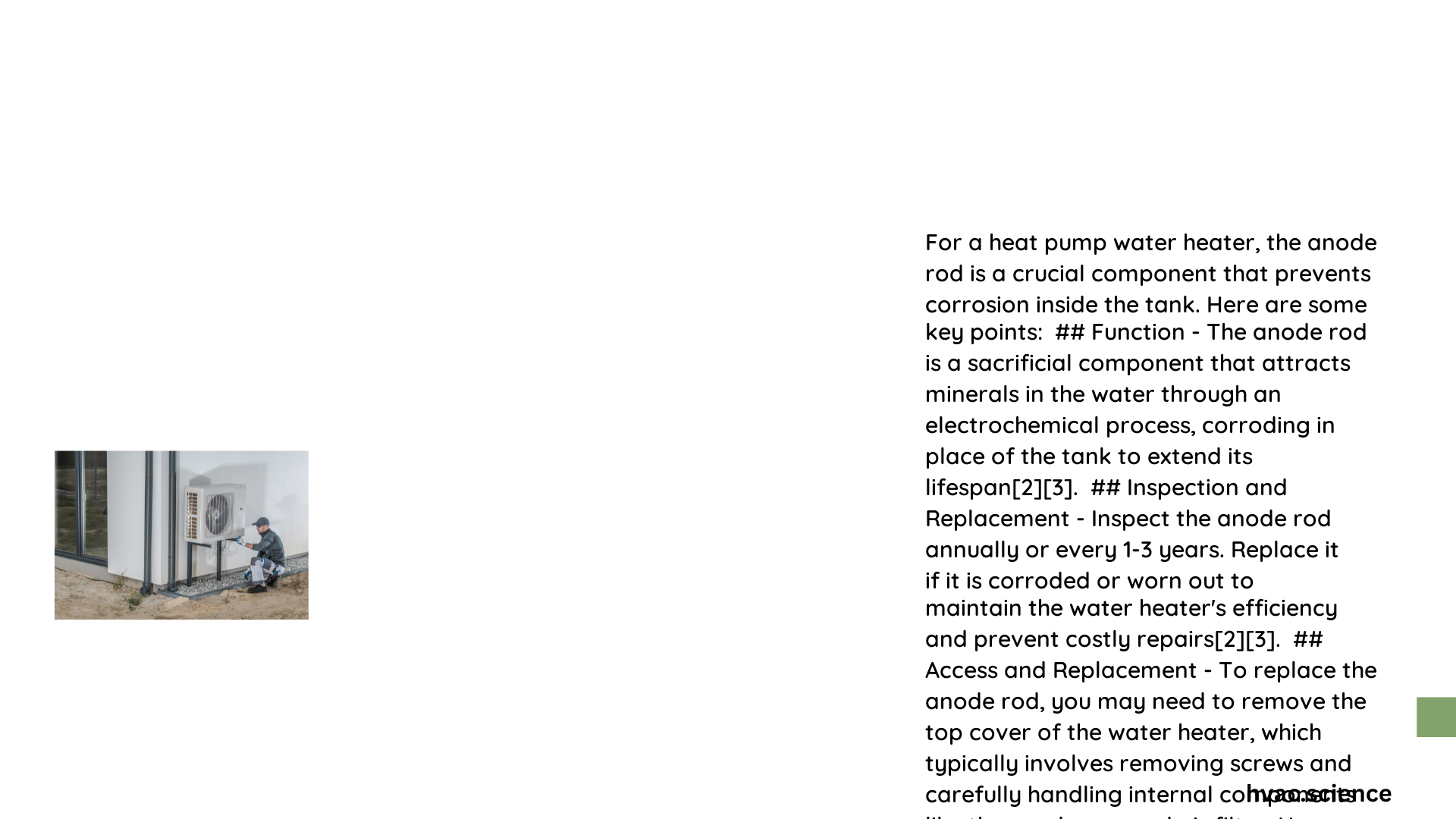Heat pump water heater anode rods are critical protective components designed to prevent tank corrosion through sacrificial metal technology. These specialized rods, typically constructed from magnesium, create an electrochemical reaction that shields the water heater’s internal tank from destructive rust and degradation, ultimately extending the appliance’s operational lifespan and maintaining water quality and system efficiency.
What Makes Anode Rods Essential for Heat Pump Water Heaters?
Anode rods serve as the unsung heroes of water heater protection, functioning through a sophisticated electrochemical process that prevents tank deterioration. By sacrificing themselves to corrosion, these rods ensure the longevity and performance of your heat pump water heater.
How Do Magnesium Anode Rods Protect Water Heater Tanks?
Magnesium anode rods operate on a principle called galvanic corrosion protection. The rod, being more electrically active than the tank’s metal, attracts corrosive elements, effectively “sacrificing” itself to preserve the tank’s structural integrity.
Key Protection Mechanisms
| Mechanism | Description | Impact |
|---|---|---|
| Electrochemical Defense | Attracts corrosive ions | Prevents tank rust |
| Sacrificial Corrosion | Rod corrodes instead of tank | Extends tank life |
| Mineral Neutralization | Dissolves harmful water minerals | Improves water quality |
What Are the Specific Characteristics of Heat Pump Water Heater Anode Rods?
Material Composition
- Primary Material: High-purity magnesium
- Core Structure: Stainless steel cable reinforcement
- Typical Dimensions:
- Diameter: 0.900 inches
- Length: 44-3/8 inches
Performance Attributes
- Exceptional corrosion resistance
- Optimal in soft water conditions
- Provides trace magnesium mineral benefits
How Often Should Anode Rods Be Replaced?
Recommended replacement intervals depend on several factors:
- Water hardness
- Usage frequency
- Manufacturer specifications
- Visual inspection results
General Guidelines:
– Annual professional inspection
– Replace when rod thickness reduces to less than 1/2 inch
– Check for significant calcium buildup
– Monitor for visible corrosion signs
What Tools Are Required for Anode Rod Replacement?
Essential tools include:
– Socket wrench
– Tape measure
– Protective gloves
– Safety glasses
– Drain valve (optional)
What Are the Step-by-Step Replacement Procedures?
- Power Shutdown: Disconnect electrical supply
- Tank Drainage: Partially drain water below rod level
- Rod Removal: Loosen and extract existing rod
- Inspection: Check tank interior for corrosion
- New Rod Installation: Insert and secure replacement
- System Restart: Refill tank and restore power
What Cost Benefits Emerge from Proper Anode Rod Maintenance?
- Prevent expensive tank replacements
- Maintain water heater efficiency
- Extend appliance lifespan by 5-10 years
- Reduce potential repair costs
Potential Challenges and Solutions
| Challenge | Solution | Preventive Measure |
|---|---|---|
| Rapid Rod Corrosion | Regular replacement | Annual professional inspection |
| Mineral Buildup | Chemical treatment | Use water softeners |
| Improper Installation | Professional service | Follow manufacturer guidelines |
Conclusion

Proper heat pump water heater anode rod maintenance represents a small investment with substantial long-term benefits. By understanding and implementing strategic protection techniques, homeowners can significantly enhance their water heating system’s performance and durability.
